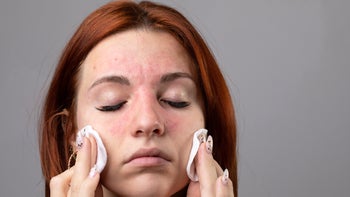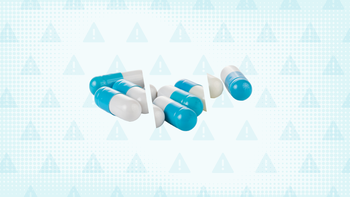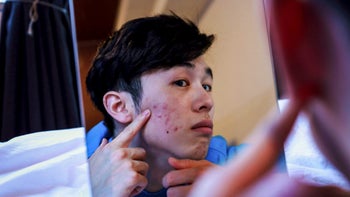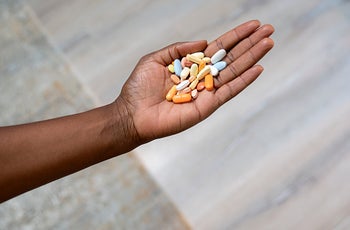
7 Ways to Get Rid of Pimples Fast
Key takeaways:
If you have a pimple, using benzoyl peroxide, salicylic acid, or a pimple patch can help it go away faster.
Your dermatologist can give you a cortisone injection to make a deep, painful, inflamed pimple heal quickly.
Avoid picking or trying to pop your pimple — this can lead to more inflammation, redness, and scarring.

Dealing with a breakout is never easy, but sometimes pimples seem to come at the worst possible time. Whether it’s a job interview, a school presentation, or a date, having a blemish can be a real downer and even affect your self-esteem. To add insult to injury, the stress of having pimples can make your breakout even worse.
Most pimples last anywhere from 3 to 7 days. But the good news is that you don’t have to settle for that. While you can’t make it disappear immediately, there are steps you can take to keep it from getting bigger and help it heal faster.
If you notice a breakout, here are seven ways to get rid of pimples fast.
One Prescription + One Pump + Once a Day
Introducing CABTREO: the treatment that has clindamycin phosphate, adapalene, and benzoyl peroxide all in one topical application. Now cash pay patients pay no more than $100 using GoodRx.

1. Dab on some benzoyl peroxide
Benzoyl peroxide is an effective acne treatment that has been around for decades. It helps kill bacteria that clog pores, lower inflammation, and break apart whiteheads and blackheads. All these effects help zap a pimple fast and make it much less noticeable.
Benzoyl peroxide is available over the counter (OTC) in many different formulations (like creams, gels, and foams) and in concentrations ranging from 2.5% to 10%. Keep in mind that it can be irritating or can dry out your skin, so stick to a lower strength if you have sensitive skin.
2. Apply a little ice
If your pimple is red, inflamed, and tender, using a little ice can help. The cold temperature from the ice can lower inflammation by tightening the blood vessels around it. It can also help reduce any pain you may be experiencing. To use ice safely, wrap it in a cloth or paper towel, and then apply it to the pimple for just a few minutes at a time. Be careful, though. If you leave it on too long, you run the risk of frostbite.
3. Use products with salicylic acid
Salicylic acid is a beta-hydroxy acid that exfoliates your skin and helps unclog pores. It’s also available in various forms, such as lotions, creams, and washes. And you don’t need a prescription for it. You can buy it over the counter in strengths of 0.05% to 5%. Salicylic acid can also cause skin irritation and dryness. It’s best to start with a lower concentration if you have sensitive skin.
4. Apply some hydrocortisone cream
To treat a pimple that’s red and inflamed, dabbing a little hydrocortisone 1% cream can help. Hydrocortisone is a type of corticosteroid that helps lower inflammation, and gets rid of redness and tenderness. But you’ll want to use it sparingly and only for a day or two. Using hydrocortisone for too long on the spot can cause skin thinning and other problems.
5. Use a pimple patch
Pimple patches are usually made with a gel-forming material (hydrocolloid) that helps absorb excess oil and pus from pimples. Some also come with ingredients that treat acne (like salicylic acid and benzoyl peroxide). Not all pimple patches work, but some can lower redness, oil secretion, and dark spots. For a red and inflamed pimple, look for patches with added antiacne ingredients.
Hormonal acne: Learn more about how to identify and treat this kind of acne (with images).
Types of acne: Use these pictures and descriptions to find out which type of acne you have.
Treatment for acne (with pictures): Here’s what works best for different types of acne and how to know which type you have.
6. Try a little tea tree oil
Some studies have shown that applying a small amount of diluted tea tree oil can help treat acne. It helps by lowering inflammation and fighting bacteria in the skin. Keep in mind that some people are allergic to tree tea oil. That’s why it’s important to test a small amount on another part of your skin (like your inner arm) before applying it to your face.
7. Visit your dermatologist
For a deep, painful, red pimple, a visit to your dermatologist can help. They can inject a small amount of corticosteroid into the pimple to quickly reduce redness and swelling. This can also help it heal quickly.
What not to do if you have a pimple
To get rid of a pimple quickly, what you don’t do is just as important as what you do. Applying the wrong thing to your face or skin can lead to more irritation or worse breakouts.
Here’s a rundown of what not to do if you have a pimple:
Avoid touching or picking at your face.
Don’t try to pop your pimple (more on this below).
Skip home remedies, like toothpaste, hydrogen peroxide, and rubbing alcohol.
Don’t use harsh scrubs or astringents.
When should I pop my pimple?
In general, it’s never a good idea to pop a pimple. Doing this can lead to more inflammation, increased pain, and acne scars. It can also make the redness and swelling worse, leading to a pimple that’s even more noticeable. And in some cases, it may make you prone to getting an infection.
If you really can’t resist the temptation, it’s safest to pop whiteheads and blackheads that aren’t red or inflamed. Make sure to wash your hands first to lower the risk of getting an infection.
Why won’t my acne go away?
If you’re getting more pimples, or your breakouts are getting worse, it may be time for stronger acne treatment. Depending on what type of acne you have and how severe it is, regularly using OTC options (like benzoyl peroxide, salicylic acid, or adapalene) may be enough. But sometimes, you may have to visit your dermatologist or other healthcare professional to get stronger prescription treatment.
If your acne is tough to treat and nothing seems to be working, talk with a healthcare professional. They can figure out what will work best to clear your skin.
Frequently asked questions
There have been some reports that salt water or salt scrubs may help to clear the skin. But the research is ongoing on its true benefit. Using too much salt on the skin can lead to dry skin and irritation, and may worsen acne. It’s also believed that having too much salt in the diet can lead to more acne. Talk with a skin health professional about the best skin care products to use to clear your skin.
Slugging, or using ointments like Vaseline to improve the skin texture or appearance, has been shown to be beneficial in some people. But those who tend to have acne may find an increase in pimples and breakouts after using Vaseline on the skin.
Lemon and lemon juice has some nutrients that may help fight inflammation and bacteria on the skin. But there isn’t enough research to prove that lemon can help against acne. In some cases, lemon may be irritating to the skin and lead to more inflammation or unwanted skin changes. Always talk with a skin care specialist before using lemon on the skin to see if it’s a good option for you.
Cystic acne can be harder to treat and isn’t likely to go away overnight. If you’re prone to cystic acne breakouts, it’s best to see a dermatologist for a treatment plan. This may include prescription medications that can help to decrease the inflammation and pain of acne cysts and nodules.
Honey has known antibacterial and wound-healing properties for the skin. So it’s thought that it would be a good treatment for fighting the bacteria that causes acne as well. But the limited research available doesn’t support honey as a treatment for acne.
The bottom line
Having a pimple can be frustrating, and it’s understandable to want to get rid of it as quickly as possible. Trying some things at home can help it go away faster or appear less visible. Trying OTC products like benzoyl peroxide and salicylic acid, or applying an ice cube to the area can help. But for deeper, more inflamed blemishes, or stubborn acne that won’t go away, your dermatologist can give you more treatment options.
Why trust our experts?


References
Nascimento, T., et al. (2023). Tea tree oil: Properties and the therapeutic approach to acne-a review. Antioxidants.
Semprini, A., et al. (2016). Randomised controlled trial of topical kanuka honey for the treatment of acne. BMJ Open.
Tanghetti, E. (2008). The evolution of benzoyl peroxide therapy. Cutis.

























